Assault Troops
version July 5 2019
To keep up with military development, in August 1917 general Snijders ordered the establishment of assault troopers. One section of each infantry company (consisting of 4 sections) was to be set up as such. They would be the first section of the company, containing the most experienced soldiers. Four sections (each battalion had 4 companies) could make up an assault company.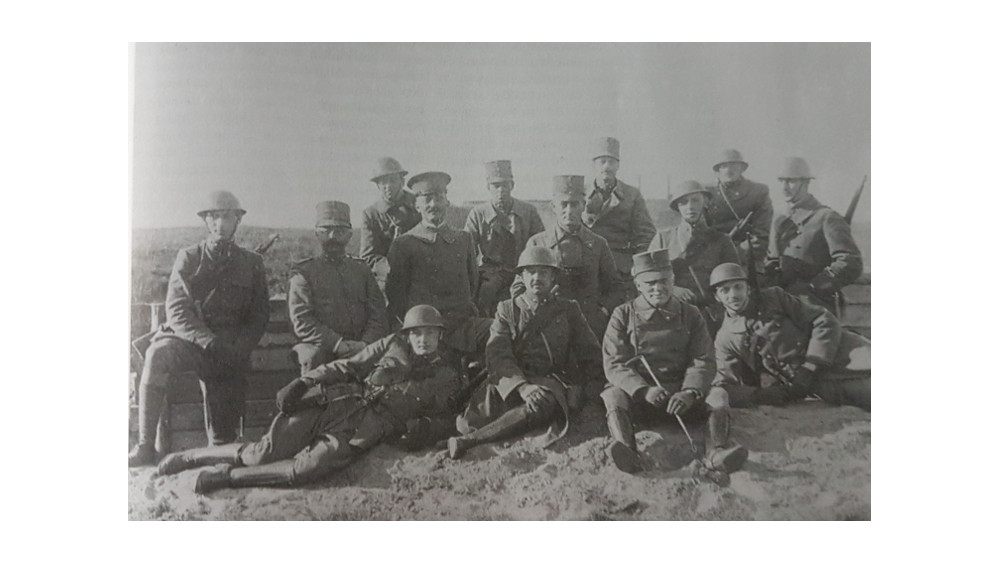
assault troops
Source: de Vries and Martens 2006
NB: in a document from 1916 about tactical and technical guidelines, Snijders already mentions assault troops. The troopers got the latest equipment, like steel helmets (1916), gas masks (1917/1918), assault dagger (1917), grenades, Madsen M.16 machine gun (not everybody), wire cutters, etc
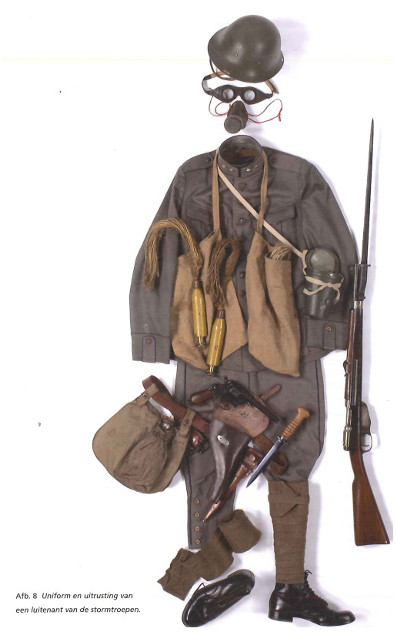
uniform lieutenant assault troops
Source: Staarman 2003
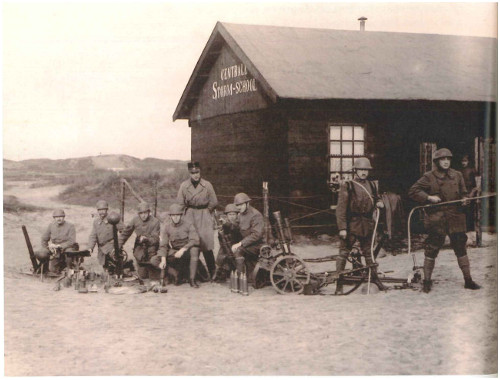
Central Assault School, at Waalsdorp
Source: Staarman, 2003
- 1 commander (lieutenant)
- 6 nco
- 20 grenadiers
- 20 fusiliers
- 8 men for 4 grenade guns
- 5 men for 2 machine guns
- 2 men for 2 flame throwers
- 2 men signals / orderly
This was theoretical: no grenade guns were used by the Duth army (although some experiments had taken place) and the flame thrower required 2 persons to handle it, not 1. Focus of an assoult section’s effort would be taking and clearing trenches. Trench raids were also a possibility. No reference to breakthrough or infiltration is made. Each section had a number of supporting weapons. The foto below shows a vickers machine gun (only in Dutch service after November 1918) and a light spigot mortar. It was invented by a retired captain from the colonial army, SNP Terie, and could fire 50 – 525 meters. 200 werd ordered in 1917.
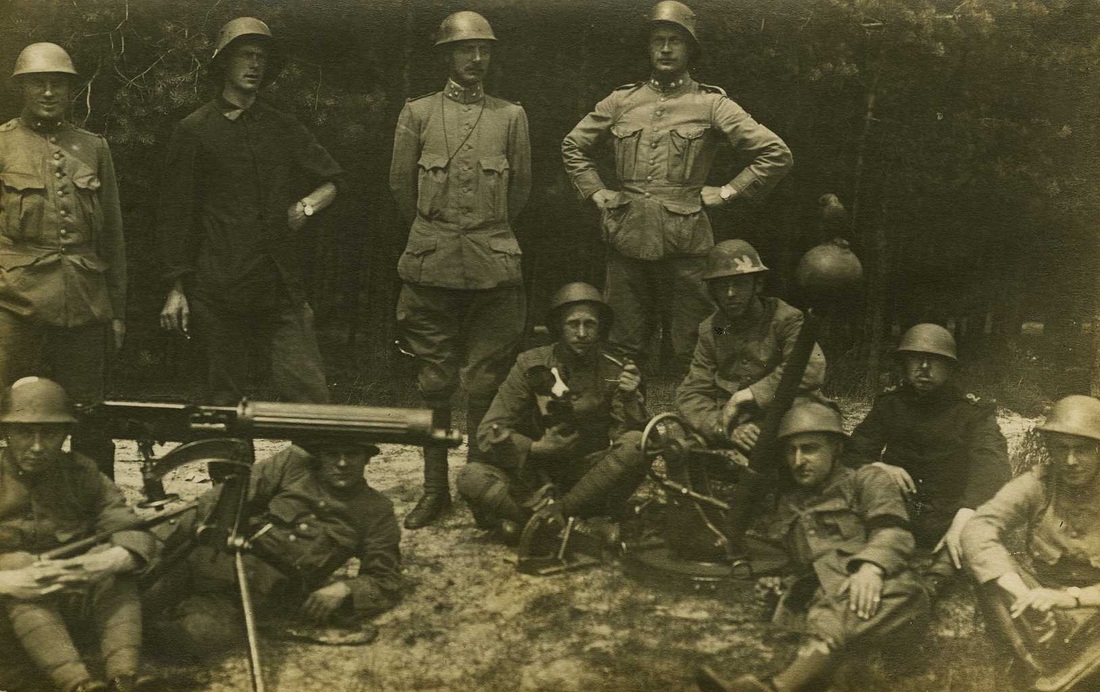
assault section with supporting weapons
Source: Internet
NB: I have the idea that the officer on the right (lieutenant) is wearing a German helmet. Another support weapon was a flame thrower, developed in 1917 and introduced in 1918. Although it was called a 1 person flame thrower, 2 men were needed for operations
There were also larger flame throwers, that could be used defensively.
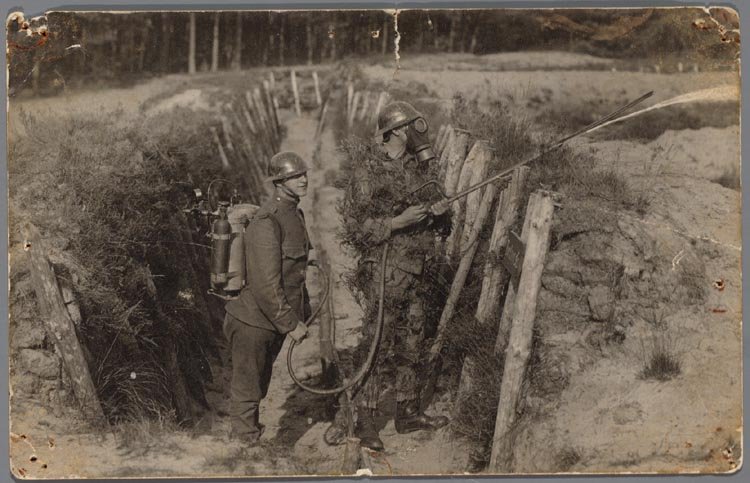
vlammenwerper
Source: Staarman 2003
The assault dagger, however, cab still be found in the emblem of the regiment Stoottroepen.

embleem stoottroepen
Source: internet
Showalter, D 2016 Verre van vredig, Nederland tijdens de eerste wereldoorlog (Far from Peaceful; the Netherlands during ww1)
Staarma, A 2004 ‘De slechtste fusiliers bestemme men tot vlammenwerper’; de introductie van stormtroepen in het Nederlandse leger tijdens de eerste wereldoorlog
(‘The worst fusiliers go to the flame throwers’ introduction of assault troopers on the Dutch army during ww1)
Staarman, A 2003 Nederlandse Vuurwapens 1895 – 1940 (Dutch Firearms 1895 – 1940)
Vries, G. de & Martens, B. 2006